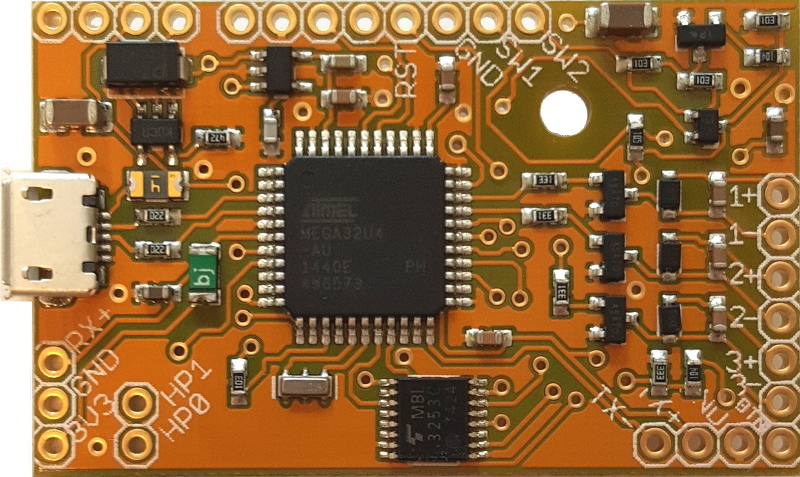The Dilduino

The Dilduino is the Arduino variant that I made for Comingle’s first product, the Mod. Although Comingle didn’t turn out too well, I’m pleased with the Dilduino. It had some cool stuff:
- 3 On-board PWM motor controls, each capable of switching over 500 mA.
Each of our vibrating motors drew about 250 mA at full load, but you could switch any DC load. Current draw is primarily limited by the li-po discharge rate.
- An on-board multiplexer for inputs and outputs.
One of the issues we faced in designing the Mod is that we wanted to make a toy that would let people experiment with a variety of sensors and controllers but we didn’t want to have a bunch of jumper wires or strange connectors sticking out of the toy. We settled on using USB connectors even though they wouldn’t be speaking real USB. USB connectors are available in a variety of configurations and they’re something everyone knows. And they gave us 4 pins: power, ground, and 2 extras. Putting a multiplexer on these pins lets the user decide what those extras are. They could act as analog inputs, PWM output, I2C, or a software serial connection, and they’re just set in software.
With those connections available, someone could drive an external light or vibrating motor, attach an Wii Nunchuck over I2C, control their toy remotely via a internet-serial connection, or just connect a basic bend sensor and create a new interaction method.
- Lots of broken-out pins for a external buttons, capacitive touch sensors, and LEDs
Since we were embedding this in an ergonomic toy, it was not sufficient to have all on-board LEDs and connectors typical of Arduino/hacker products. We had several other circuit boards attached to the Dilduino that were part of the whole toy electronics assembly. So you have lots of pins broken out for whatever setup you’ve got in mind.